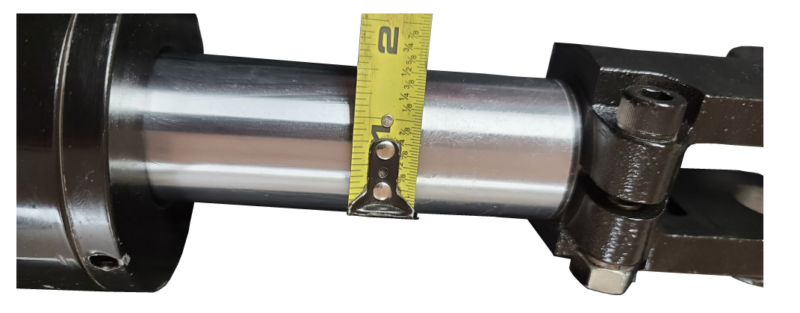Cylinder Reference Guide
What Type Of Cylinder Do I Have?
The first step in selecting a replacement cylinder is identifying what style of cylinder that you currently have. While many manufacturers utilize common style cylinders, many do not. Please see the figures below to identify your cylinder.

Tie Rod Cylinders
If your cylinder is held together with four large bolts, you are in luck because this is the most common tie-rod style cylinder. The cylinder will have a clevis mount on the barrel end of the cylinder. The rod end mount is usually threaded to accept a clevis or possibly some other style of end. There are not as many options in this style of cylinder.

Welded-Clevis Style Cylinder
If your cylinder has a welded body and has a clevis mount on each end it is a welded-clevis style cylinder. The cylinder will have a clevis mount on the barrel end of the cylinder, with the rod-end mount is usually threaded to accept a clevis or possibly some other style of end.

Welded-Cross Tube Style Cylinder Or A Welded Loader Cylinder
If your cylinder has a welded body and has a short piece of pipe on each end it is a welded-cross tube style cylinder or a welded loader cylinder. The cylinder will have different widths on each end. You will want to place close attention to mounting widths and pin hole sizes to insure compatibility.

Pin-Eye Cylinders
If your cylinder has a hole drilled through the rod end of the cylinder, this is what is called a pin-eye style cylinder. These cylinders are commonly available with either a clevis mount or a cross-tube on the barrel end. You will want to place close attention to mounting widths and pin hole sizes to insure compatibility.

Welded-Tang Cylinders
If your cylinder has a welded body and has a short piece of pipe on one end and the other has a whole through the main body of the cylinder for mounting, welded-tang cylinder may be an option. The cylinder will have different widths on each end. You will want to place close attention to mounting widths and pin hole sizes to insure compatibility.

Welded-Swivel Eye Cylinders
If your cylinder has a welded body and has a swivel ball mount on each end it is a welded-swivel eye cylinder. Swivel eye hydraulic cylinders are utilized in applications where the pinning of the cylinder needs flexibility or does not have straight alignment.

Trunnion Style Cylinders
If your cylinder is mounted on lugs coming out of the side of the cylinder, this is what they would call a trunnion style cylinder.
Cylinder Measurements
Use The Tabs Below As References In Measuring Your Cylinder.
*When We Discuss A 3″ x 8″ Cylinder, We Are Referring To A 3″ Bore Cylinder With An 8″ Stroke*

Extended Length
With the rod fully extended measure from the center of the first mounting pin to the center of the second mounting pin.

Retracted Length
You will want to measure with the rod fully retracted measure from the center of the first mounting pin to the center of the second mounting pin.
Cylinder Stroke
For cylinder stroke take your extended length minus the retracted length.

Cylinder Rod Diameter
Measure the outside diameter of your cylinder rod.

Bore Diameter
You will need to measure the inside of the tube to get the bore diameter.

